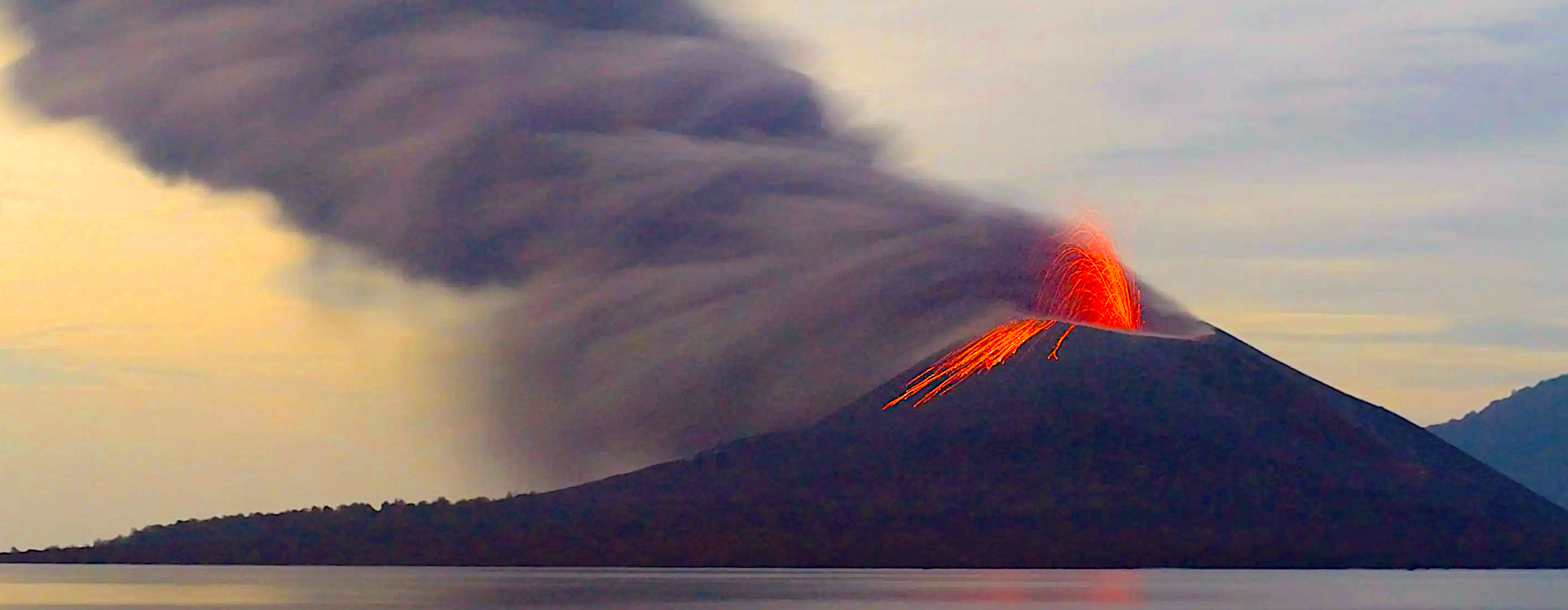Original post ⇒ HERE
Question
How do volcanoes affect global warming?
Answer
Chris Smith put this to Professor Marian Holness, geologist from the University of Cambridge…
Marian – That’s a really interesting question. Now, volcanoes are part of why the Earth stays the same temperature or the same climate for long periods of time. It’s all part of the carbon cycle. So inside the Earth, there is a lot of carbon dioxide and it comes out when volcanoes erupt or sometimes continuously, coming out of degasing magma underneath volcanoes. So there’s a continuous stream of carbon dioxide coming into the atmosphere from the centre of the Earth. This is primordial CO2 that was there when the planet was made. Now, if that carried on then clearly, we would just have a carbon dioxide climate and that’s not actually true.
Carbon dioxide is quite rare in the Earth’s atmosphere.
And that’s because there is a carbon sink which is to do with weathering. So, when you get CO2 in the atmosphere, it dissolves into rainwater, it dissolves into river water and it turns into carbonic acid, and that weathers the rock. Eventually, you end up by making limestones.
So all that carbonic acid goes into the oceans and then reacts with dissolved calcium and makes calcium carbonate which turns into either animal shells or into limestones which then trap the carbon dioxide. It’s now in rock and it’s no longer in the atmosphere.
Chris – So there’s a sort of equilibrium there.
Marian – There is an equilibrium.
Chris – The volcanoes, they’re returning to the atmosphere this stuff and there are processes drawing it down so we end up with the levels that we roughly got.
Marian – We have a balance and it just balances itself. So, if we have a period of continental collision for example, and you’re making all these mountain belts, you suddenly got loads and loads of rock that’s available for weathering. So, you have a momentary period where you’re drawing down a lot of carbon dioxide from the atmosphere. The Earth cools a little bit. But because the Earth cools, all those reactions that can then turn the dissolved carbonic acid into rock slow down. So the whole thing can get back into balance.
Chris – And that’s why we see what Ice Age is coming in geological timescales because you get these processes happening like India migrating down from where the Antarctic is, up to crash into Asia and make the Himalayas. This exposes lots of the seafloor of the Indian Ocean and pulls down CO2 like in Ice Age.
Marian – Well, yes. You’ve made that big batch of nice fresh rock that’s all ready to be weathered and it doesn’t make Ice Ages though. I mean, the Ice Ages are cyclic to do with the way the Earth is processing around the sun and the tilt of the Earth’s axis. That’s not really my field at all. But one example I’d like to give actually is what happened 252 million years ago when there was an enormous outburst of volcanic activity in Siberia – the Siberian Traps, they’re called. Just masses and masses of basalt poured out into the surface of the Earth, pumping carbon dioxide into the atmosphere and it actually warmed the Earth up so much. It got hotter by 8 degrees which when you think we’re trying to limit what we’re doing now to 2 degrees there’s an enormous heating of the Earth. And it wiped out 97 per cent of the species on the planet, this global warming event because the carbon dioxide was pumping into the atmosphere so fast that the normal drawdown procedures just got completely swamped.
So it was sort of a massive version of what we’re actually doing now.
.
Carbon dioxide is a heavy gas and eventually settles in lower atmospheres. CO2, has an atomic weight of 44.
This is almost double the weight of air, which means it cannot be a greenhouse gas. There are trace elements of carbon dioxide in the upper atmosphere caused by volcanic eruptions, but it is too heavy to remain there.
.
The theory of global warming seems to have occurred after a major volcano event. [ See fluoride gases.]
Reproduced by:





